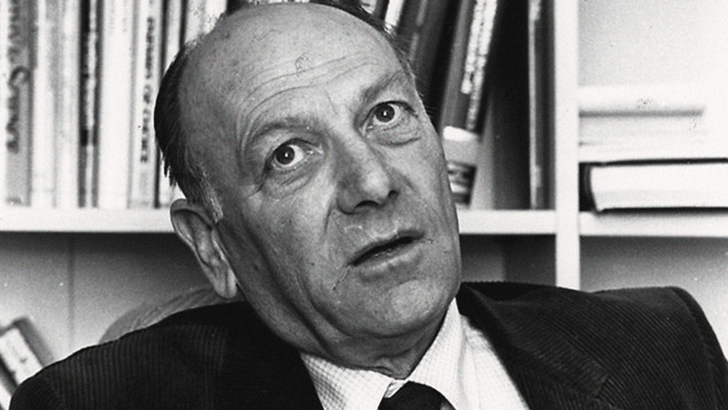The man who broke the law fighting for women’s rights

In the 1960s and ’70s, the illegal abortion industry was the basis for one of the most lucrative and enduring criminal rackets in Australian history. A million dollar police protection racket extorted money from doctors – some of whom mixed in prestigious social circles – who secretly performed abortions in their clinics.
The criminalisation of abortion inevitably led to corruption. As Gideon Haigh wrote in his book The Racket: how abortion became legal in Australia, “The Breaking Squad did a flourishing trade in stolen goods … Yet as Homicide detectives were apt to complain, there was little money in murder.” The only racket they had was abortion. Legal abortion threatened this.
Abortion rights campaigns today are dominated by women, so it is often assumed that abortion rights were won solely by the women’s movement. However, some of the most significant figures in the 1960s campaign for abortion law reform were male doctors and journalists who risked much to take on the police racket.
The backdrop to the movement was the radicalisation against the Vietnam War and growing working class militancy. In fact, the abortion issue came to a head in 1969 in the midst of the industrial chaos caused by the arrest of railway union official Clarrie O’Shea, with the landmark decision in Victoria of Justice Menhennitt.
He found a doctor not guilty of performing an illegal abortion on the grounds that “a lawful abortion is one believed by the doctor to be necessary to preserve the woman from serious danger to her life or her mental or physical health”. The case had to be delayed due to lack of public transport caused by striking workers.
The campaign
The Abortion Law Reform Association (ALRA) began campaigning in 1966. They were too conservative to wage the necessary battle. Jo Richardson and Australian journalist Lionel Pugh met a doctor named Bertram Wainer, who would later take on the police, at meetings of the ALRA.
Jo, who later married Wainer, recalled, “He sat and listened for a while, then he said, ‘I think we should just do a test case.’ We all looked at him askance and said, ‘You can’t do that – that is breaking the law.’ He said, ‘I know. Then they will arrest us and we can argue it in front of a jury.’”
Wainer had been an Australian army doctor, reaching the rank of colonel before resigning because of Australia’s involvement in the Vietnam War.
In 1967, a young woman staggered into his surgery and collapsed in a pool of blood, haemorrhaging following a botched backyard abortion. She refused to go to hospital for fear of arrest. He treated her in her flat and she recovered. After that, Wainer dedicated his life to the issue.
The Menhennitt ruling of 1969 established at least the minimal right to legal abortion until 2008, when it was removed from the criminal code in Victoria, and it provided the basis for reform in other states.
In theory, the decision meant Victorian doctors could perform a legal abortion if they believed the danger of continuing the pregnancy was greater than that of termination. But it was unclear how the police would interpret the ruling.
So Wainer set out to test it. He performed three abortions and announced them publicly. Aware of the widespread public support for abortion reform, the government refused to prosecute him. Its strategy was to ignore the whole episode and hope Wainer would go away.
He then set about exposing the police. He obtained a large number of sworn affidavits from witnesses involved in the illegal abortion racket who were willing to risk police victimisation in order to expose corruption. Both the chief commissioner of Victoria and the chief commissioner of police refused to accept the evidence
Inquiry and cover-up
So, with the help of a journalist from Truth, Evan Whitton, he released the affidavits to the press. The public pressure forced the government to call an inquiry into police corruption in connection with illegal abortion practices.
Although a number of senior police officers were jailed, Wainer described the episode in his book It Isn’t Nice as “cleverly contained, satisfactorily mopped up and with any loose debris swept under the carpet”.
However, he and his associates did achieve important gains for women. In 1972, he and Jo Wainer set up the East Melbourne Fertility Control Clinic. Still in existence, it is the first and longest running clinic of its kind in Australia.
These gains demanded enormous personal sacrifices from Wainer, his colleagues, family and fellow campaigners. He was aided by a number of journalists, including his friend Lionel Pugh, who helped him publish evidence of police corruption.
Pugh’s body was later found in a Parkville street with a shotgun and a note. Police declared the death a suicide. Wainer performed the autopsy, which found that Pugh could not have fired the shot that killed him.
Wainer was stabbed by unidentified thugs and left for dead, his sister’s home was firebombed, and both he and Jo Wainer were shot at.
Women suffer sexism every day, so this history of men who went out on a limb for women’s rights is important and should be remembered.
Follow Kim on Twitter @kim_doyle1